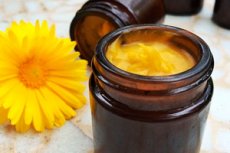Treatment of itchy skin in the groin
Last reviewed: 07.06.2024

All iLive content is medically reviewed or fact checked to ensure as much factual accuracy as possible.
We have strict sourcing guidelines and only link to reputable media sites, academic research institutions and, whenever possible, medically peer reviewed studies. Note that the numbers in parentheses ([1], [2], etc.) are clickable links to these studies.
If you feel that any of our content is inaccurate, out-of-date, or otherwise questionable, please select it and press Ctrl + Enter.

The best therapeutic option is one that targets the cause of the condition, but in the case of skin itching this is not always possible. Therefore, the treatment of itchy skin in the groin is often symptomatic.
Nevertheless, existing treatment regimens for this symptom in specific diseases determine exactly what to do and how to get rid of itching in the groin.
What medications to use externally for itching in the groin
So, the choice of remedies for treatment of itchy skin depends on its etiology. If the itching is caused by scabies, then for its treatment can be used as a simple sulfur ointment or ointment benzyl benzoate, and Medifox gel (with permethrin), cream and lotion Crotamiton, emulsion Lindane. Other drugs, as well as their dosage and all the details about contraindications and possible side effects see. - ointment for scabies.
If itching in the groin area is associated with diaper rash, you should apply ointments for diaper rash.
External remedies designed to treat rashes and relieve itching in the groin area in dermatitis (simple contact or allergic) include corticosteroid, i.e. hormonal ointments for allergies: Beloderm, Acriderm or Celestoderm B (with betamethasone), Elocom or Histane (with mometasone), Advantan (with methylprednisolone), Flucinar (synonyms are Synoderm, Synaflan).
More information on how and when these ointments and creams for groin itching should be applied in the materials:
Antihistamine gel Fenistil (containing dimethindene maleate) can be used for skin itching of any origin (with the exception of itching associated with bile stasis): during the day, two to three times applied to the itchy areas of the skin.
In severe cases, when local remedies do not cope with severe itching, histamine H1 receptor blocking antihistamines may be prescribed: Loratadine (Loristam, Claridol, Clarisen), Tavegil (Clemastine), Dimethindene (Phenistil drops), Cetirizine (Cetrin, Zyrtec, etc.). More details about the drugs of this pharmacological group in the publication - pills for itching of the skin
For inguinal itching associated with herpes simplex virus types 1 and 2, Acyclovir (Virolex, Zovirax) is used - herpes Creams.
And when itching is caused by genital warts formed in the groin area, it is recommended to use ointments for papillomas.
Antimycotic ointments for itching in the groin
Topical antifungal agents, i.e. Antimycotic ointments for itching in the groin in dermatophytosis - superficial mycosis caused by the fungi Trichophyton mentagriphynes, Trichophyton rubrum and Epidermophyton floccosum, are represented by such preparations as: Terbinafine (other trade names - Terbisil, Lamisil, Lamifene, Fungotebin, Naftifin (Estesifin, Mycoderil, Mycoseptin). Terbinafine (other trade names - Terbisil, lamisil, Lamifen, Fungotebin), Naftifin (Estesifin, Mycoderil), Mycoseptin, Sertamicol (Zalain), etc.).
How to use these drugs, read in the publication - effective ointments for fungus
Patients with candidomycosis skin (the causative agent of which is the yeast-like fungus Candida albicans) experts recommend imidazole derivatives - Econazole gel (Ifenec), as well as ointment or cream Clotrimazole (Candide, Candisan, Clofan).
These remedies are used in the usual way: applied to the itchy epidermis twice a day; the standard course of treatment lasts about a month. Clotrimazole should not be used in the first trimester of pregnancy, and Econazole should not be used in patients under 16 years of age.
Antifungal medicines in tablets taken orally - Terbinafine, Griseofulvin or Itraconazole (Itricon) - are prescribed if the skin lesions are extensive and the course of the disease is severe. About these drugs in detail see. - pills for skin fungus
Homeopathy, vitamin and physiotherapy
The remedies that homeopathy offers can only be prescribed by a "like-for-like" treatment specialist, and he will determine the dosage for each patient individually. Dermatological remedies include:
- Graphite - for dry red skin with cracks and for itchy rashes in skin folds;
- Rhus toxicodendron - for contact dermatitis;
- Nosode (Medorrhinum) - for severe rashes suggesting fungal infection;
- Calcium sulfide (Hepar sulphuris) - if the rash is inflamed.
Although vitamin therapy is an additional, but nonspecific means of improving the overall metabolism in the body, dermatologists include in the treatment regimen vitamins: A, C, E, B6, B12, PP.
Taking into account the causes of itching, physiotherapeutic treatment may be prescribed: ultraviolet or infrared irradiation of the affected areas of the skin, electro- and phonophoresis with dimedrol or hydrocortisone, balneotherapy, peloid applications (therapeutic mud).
Folk treatment
Let's start again with itching caused by scabies. Folk treatment of this parasitic disease is discussed in detail in the material - quick and effective treatment of scabies at home.
In other cases, reduce the sensation of itching compresses with grated raw potatoes and blue clay, apply crushed garlic (mixed with petroleum jelly or castor oil), make lotions with a concentrated solution of baking soda, fresh juice of aloe and golden mustache, with propolis dissolved in water.
It is said that cilantro leaves crushed to a pulp and its seeds, called coriander, are good for relieving itching. Only from coriander it is necessary to prepare a decoction (a teaspoon of seeds or ground coriander per liter of water) and take it once or twice a day for five or six days.
Phytotherapists warn that treatment with herbs, as a rule, is long, although there are enough medicinal plants that can help with these symptoms - in the form of baths, lotions or washes. These are the flowers of chamomile and common flaxseed; plantain leaves; herbs of alternaria tridentata, violet tricolor, bird's-eye throat (ergot) and sage.
Read also:

